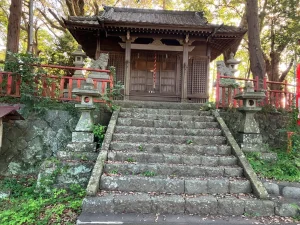This article was created using a translator. There may be expressions that are difficult to understand. If you have any questions, please check by yourself.
Please consult us about anything related to Fujieda City.
CONTACTAoyama Hachimangu Shrine has a history of over 900 years. Three portable shrines parade through the community for a day to pray for the prosperity of the community. The sight of everyone becoming united toward the end of the day is a charming example of a festival that is rooted in the community.
Aoyama Hachimangu Shrine

Aoyama Hachimangu Shrine is located on a quiet hill in Yawata, Fujieda City, and stands guard over the community from there.
An information board at the entrance states that the shrine has been revered by numerous military commanders, including Toyotomi Hideyoshi and the Tokugawa Shogunate, over its more than 900-year history, indicating that it is a shrine with a long history.

Located a short distance from the main street, the shrine is usually visited at a leisurely pace, with few signs of people, although the sound of cars can be heard in the distance. It is a moderate 7 or 8 minute walk to the shrine, climbing a bit among the trees.





Hachiman-san Festival

The Aoyama Hachiman Shrine Festival, known locally as the Hachiman-san Festival, is held every year on the third Sunday in September to pray for the prosperity of the community.
In the old days, Houjoe was held on August 15 of the lunar calendar, when horseback archery was performed and three portable shrines were paraded. This has become the current annual festival.
The Fujieda Grand Festival, held once every three years in Fujieda, is said to have originated when a yatai from Fujieda-juku accompanied the procession of the portable shrine parade of Aoyama Hachimangu Shrine.
The festival
In 2024, the festival was held on Sunday, September 15. With the cooperation of the Hirohata Mikoshi Association, we would like to report on the coverage of the festival, focusing on the mikoshi.
The festival began at 1:00 p.m. at the shrine pavilion at the top of the mountain.

There is a children’s dance, followed by the Gorei-in, and then the three portable shrines are carried on the ground.

At the Satomiya shrine, there is also a children’s dance, rice cakes are thrown and distributed, and after the ceremony is over, the portable shrines gain momentum and begin to make their rounds of the town.



The three portable shrines are called Saki Goshi, Naka Goshi, and Ato Goshi, respectively. The Saki Goshi is carried by the Mizumori and Kamidoma districts, the Naka Goshi is carried by the Kijima, Yahata, and Shimodoma districts, and the Ato Goshi is carried by the Yokouchi, Kariyado, and Ushio districts, and they make the rounds of their respective districts.
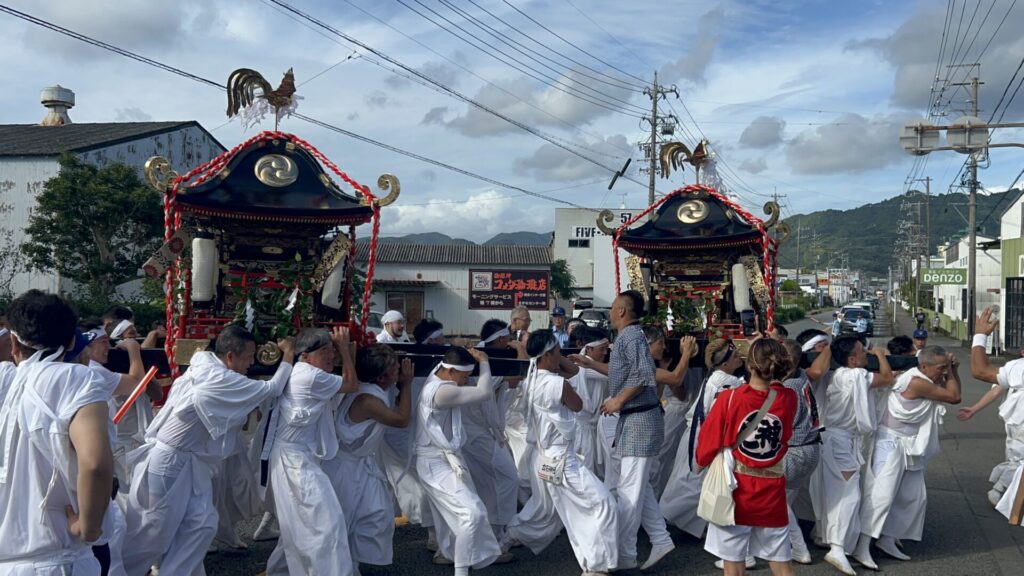

The family that has offered a gift celebrates by parading the mikoshi in front of their entrance.
Neri (parading) the mikoshi means the way the mikoshi undulates up and down, left to right, and side to side as the bearers bend down and jump around.
Since it takes all one’s strength to move the heavy mikoshi, the vigorous and powerful appearance of the mikoshi is thought to be associated with good fortune.
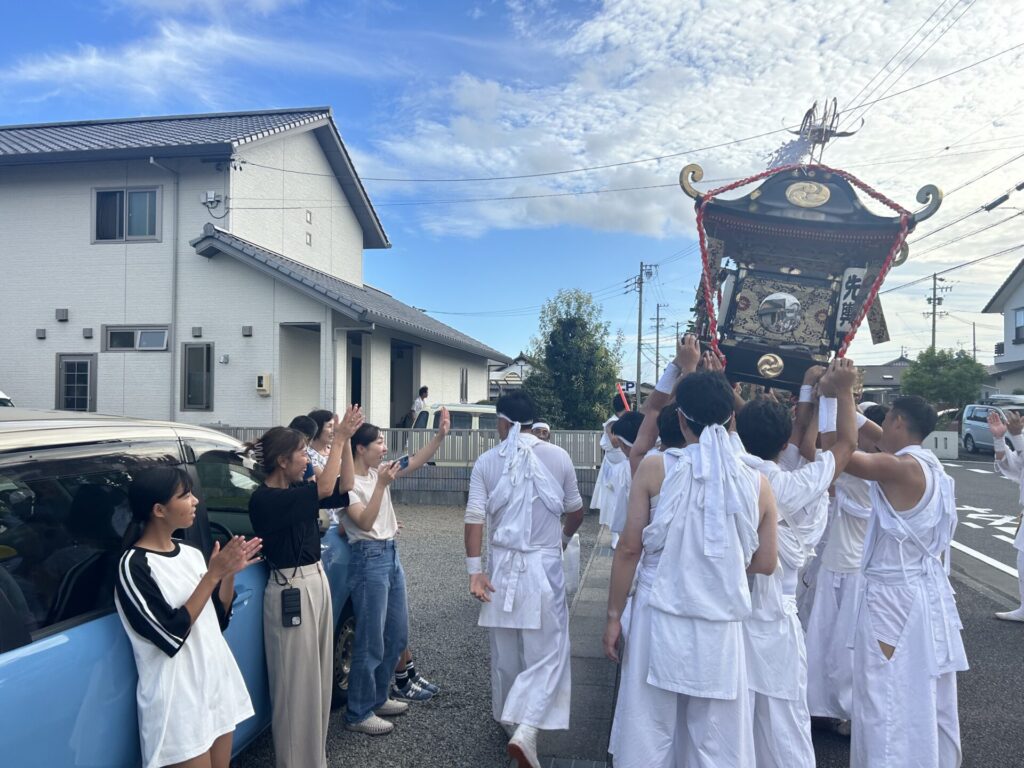
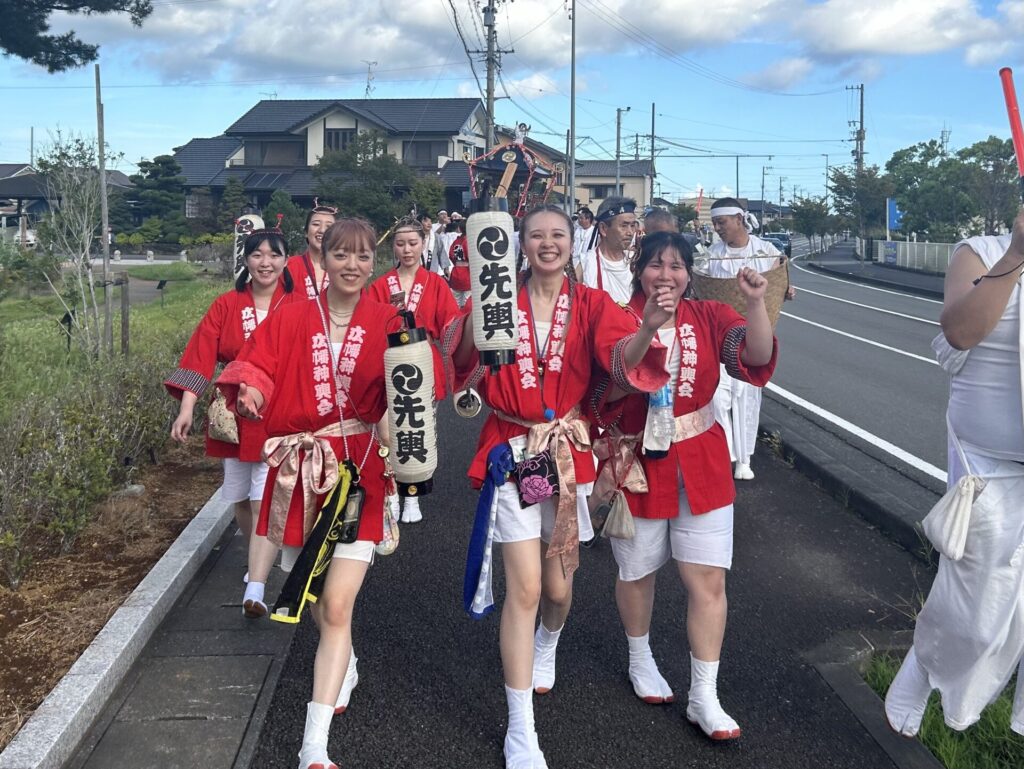



During the procession, the participants stop at rest areas in the town for drinks and snacks to help the carriers. The procession continues through the town until around 7:00 p.m.
At around 7:00 p.m., the three portable shrines gather at a rest area on the approach to the shrine to rest their bodies while working hard for each other.
Finally, the three mikoshis circle around the Satomiya at the foot of the hill and return to the shrine pavilion at the top of the hill. This is the climax of the festival.

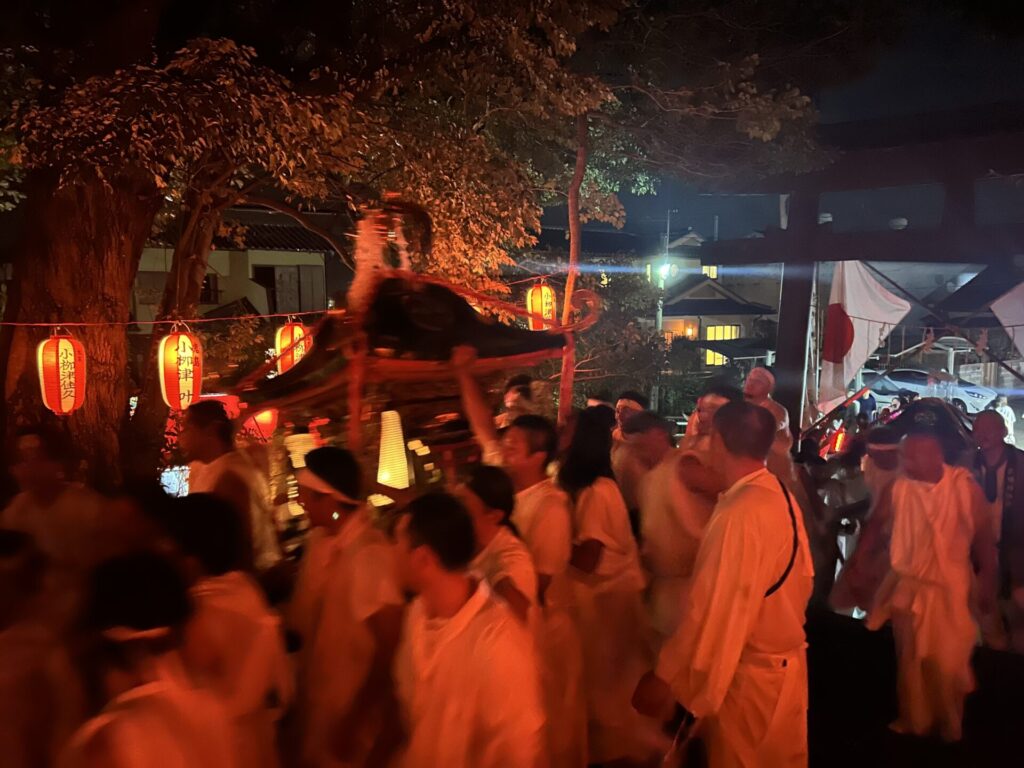

The participants are already exhausted, but they exert their last strength to climb up the hill.

Everyone, whether they were the bearers or not, shouted in unison and climbed the hill little by little.
Although the pictures do not do it justice, the sense of unity and enthusiasm that we felt as we climbed with all our might was something to be felt at our side.

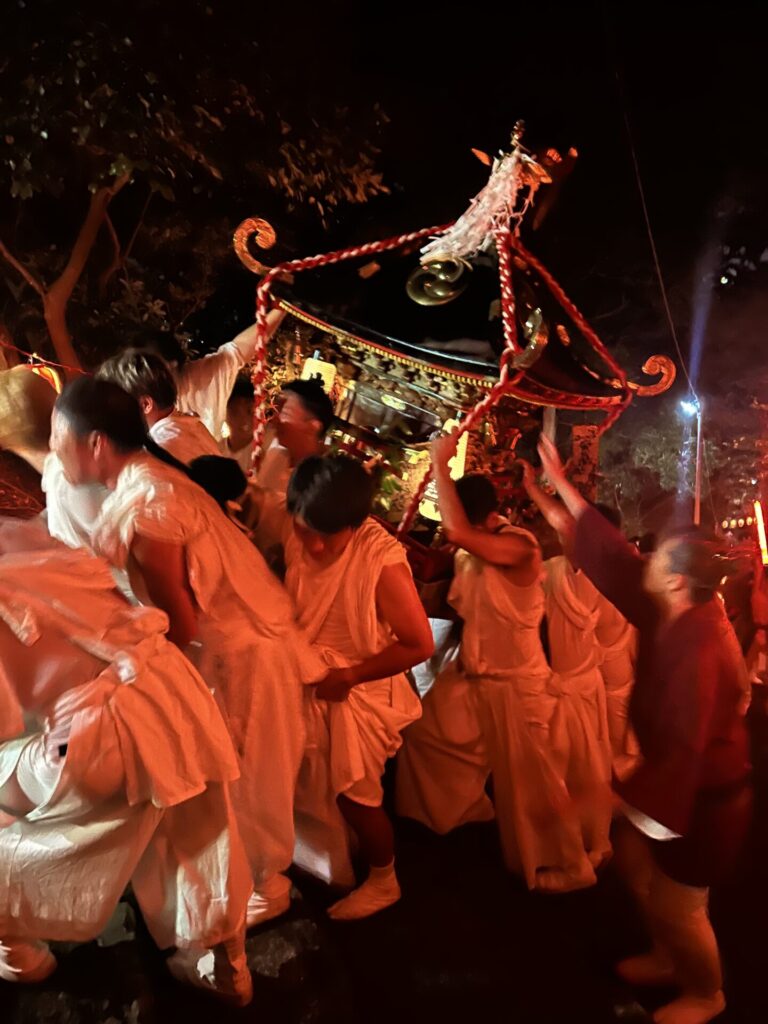
Finally, we arrived at the shrine hall at the top of the mountain. When the portable shrine is placed on the ground, some people fall to the ground and some even get their feet caught in their feet.

Finally, the spirit is returned to the shrine.

The mikoshi is then placed in the kura, and the festival is safely over before 9:00 p.m.



Thank you everyone for your hard work throughout the day.
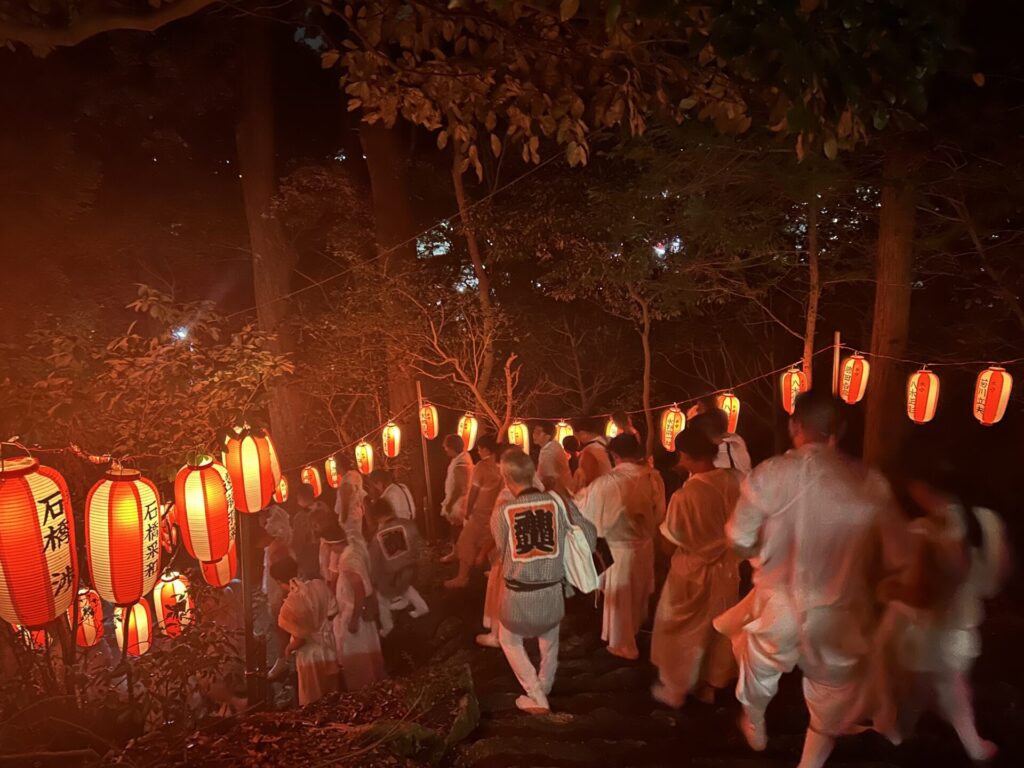

Although not a nationally known festival, it was a very worthwhile festival with a lot of enthusiasm. In the new residential area where I was born and raised, there were no festivals like this, so I found it very attractive. I would like to participate if I could. I don’t know if I would be able to carry it all the way through, though.
I have heard that there are many traditional festivals throughout Japan that have difficulty continuing due to a lack of bearers. The issue is the same here. Hirohata Mikoshi-kai seems to have a system to accept not only local people, so why don’t you visit them if you are interested?
Video of the festival
Name: Aoyama Hachiman Shrine Festival
Date:3rd Sunday in September every year, 13:00 – 21:00
Place:Aoyama Hachimangu Shrine – surrounding area
Address:977 Yawata, Fujieda City, Shizuoka Prefecture
Interview supported by: Hirohata Mikoshi Kai, Permission for interview by: Aoyama Hachimangu Shrine








